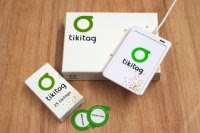
It has been a while since I added a blogpost, but it was quite hectic the last two weeks. mLearn08 started which resulted in a lot of extra knowledge. I would have blogged live from the venue, but the hotel's infrastructure could not cope with all of the participants logging into their wireless.
So all of my notes and movies on mLearn08 will be posted in the next few days and weeks. Because I did not have the opportunity to live blog, I got thinking about possible ways to provide feedback of a conference. This resulted in some ideas going from simple text, to synthesizing papers I found interesting to movies that give a more indepth idea of what the speaker was talking about.
This post is based on the keynote speach of Diane Laurillard who is well-known for her ground breaking work on (mobile) learning methodologies. the notes were taken during her keynote, so they are a bit hectic, but it might inspire you to take a closer look into her publications.
mLearn keynote Diane Laurillard - Towards a pedagogy-driven account of mobile learning
Dianne Laurillard works at the Institute of Education. She is a renowned researcher.
Her talk is very structured, filled with knowledge and definitely positive on new learning techniques in which the learner is central in identifying what they want to learn and learn.
Were do new TELearning pedagogies taken us? Digital technologies are not optimized for learning. So understanding what would make the technology pedagogy driven is essential.
Technology is transforming learning. Technology tools are optimezed for business and leisure. They are good for learning trhoug attention, discssion, production, emotional engagement. Waht we need are tools for guided inquiry, structure discussion, orchastrated collaboration, adaptive practice, serious games.
Technologies for transforming teaching. These tools need to be good for guiding inquiry, structuring discussion, orchestrating collaboration, adapting leanrners' practice, designing learning activities.
So how do we make sure that the pedagogy is developed to take technology into teaching.
a common framework of representation:
- teacher <=> learner, pracice environment, learner's practice.
- Construtionist approach takes a more practice-focused environment: task goals, feedback, actions, revision.The iteration between these links leads to better achievement of developing ideas and knowledge.
- Social constructivist: debate, ideas, develop your own concepts, the social aspects between learners is important.
- collaborative learning: reflecting on peer ideas, offer their own output, so learners driving each other. The teacher sets up this kind of learning environment.
So this is a conversational framework in which we can try the learning theories of the last centruyr, and ecncapsulate them in a form that enables educatiors to test them.
Testing the value of our conventional and technologies
Learning through inquiry: explore resource banks, libraries, research..
learning trhough discussions: peers become important as well next to the teacher.
learning through practice: less teacher input.
learning through production... (12 cycles)
In conventional we have parts of the complete learning design.
The conversational framework - challenges the learning design.
conventional learning:
- learning through attention: powerpoint, digital videos,animation, podcast
- learning through inquiry: online resources, digital libraries, website
- learning through discussion: chats, wikis,
- learning through collaboration: meetings, group work
- learningh through practice: simulations, spreadsheets, data analysis, tool, game
- collaboration: networks, wikis
- production: websites, programs, powerpoints, digital videos,...
Digital bring something to the practice that other techniques cannot do. Technologies also address but a part of the complete learning design.
We need to incorporate all of the technologies available.
What are mobile technologies good for?
- the learning affordances fo the technicale features.
- exploring: real phywical environments, linked to digtal guides
- investigating
- dscussing
- recording capturing data
- building making modelling
- sharing
- testing: products built, against others' products
- adapthing
- reflecting
- Rich forms of cognitive motivation.
affective forms of motivation
- control over goals
- ownership
- fun
- identity
- learning-in-context
- continuity between contexts
How do we ensure the pedagogy exploits the technology and not vica vesa. What are the specific affordances of mLearnng.
- theory in the conversational framework: the engine that powers the learner's developing experience, a continued iteration.
- digital technoloiges are not typically optimised for learning design.
- we need to reverse the direction of influence to make pedagogic resquirements the driver.
- the confersational framwork shows that several integrated technologies are needed to support formal learning
- its specific requirements for collaborative learning are well met if the learning design for mobile technology is designe to .. them
Question from mike sharples: simulated practice environment can only come as close to the actual work. Mobile learning can take you to the real world, rather then simulations of the real world.
informal learning, but the learner is in control in that context. But there is always an aspect of structure or background starting from the teacher.
question from woman in the audience (did not get her name): Questioning if the adaptation of technology for learning/education is a good market.
(personal argument: look at the longtail, if we can prove that technology for learning IS a market, the market will follow). Diana: we must give more voice to the educational field.
